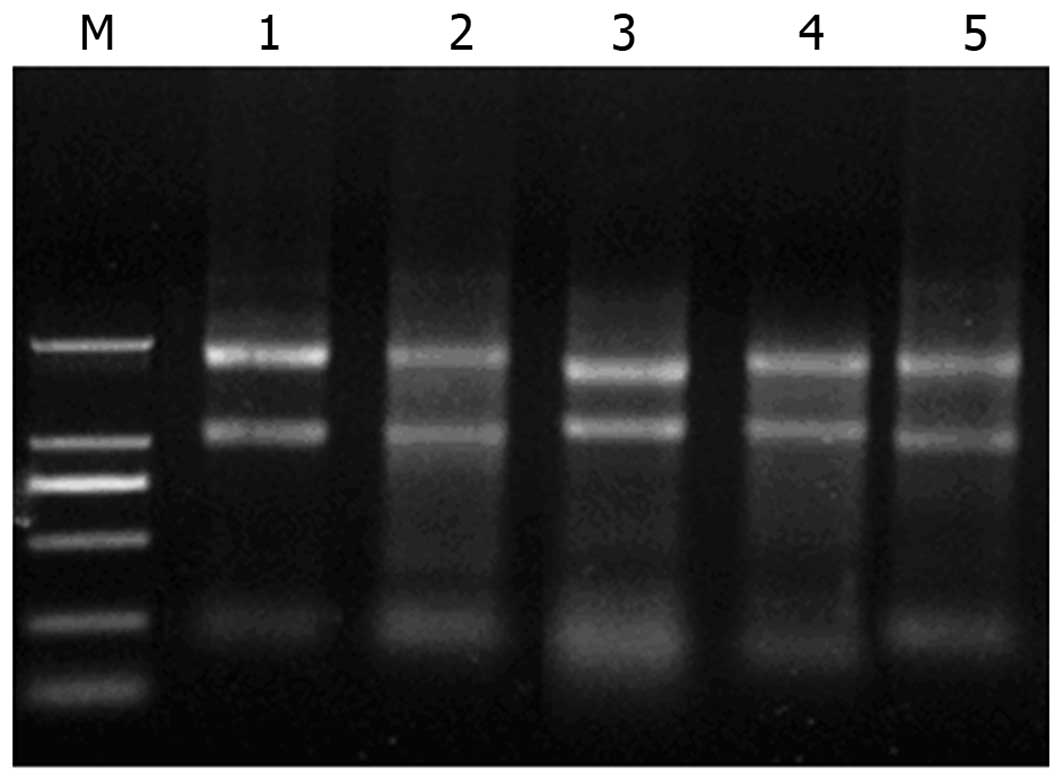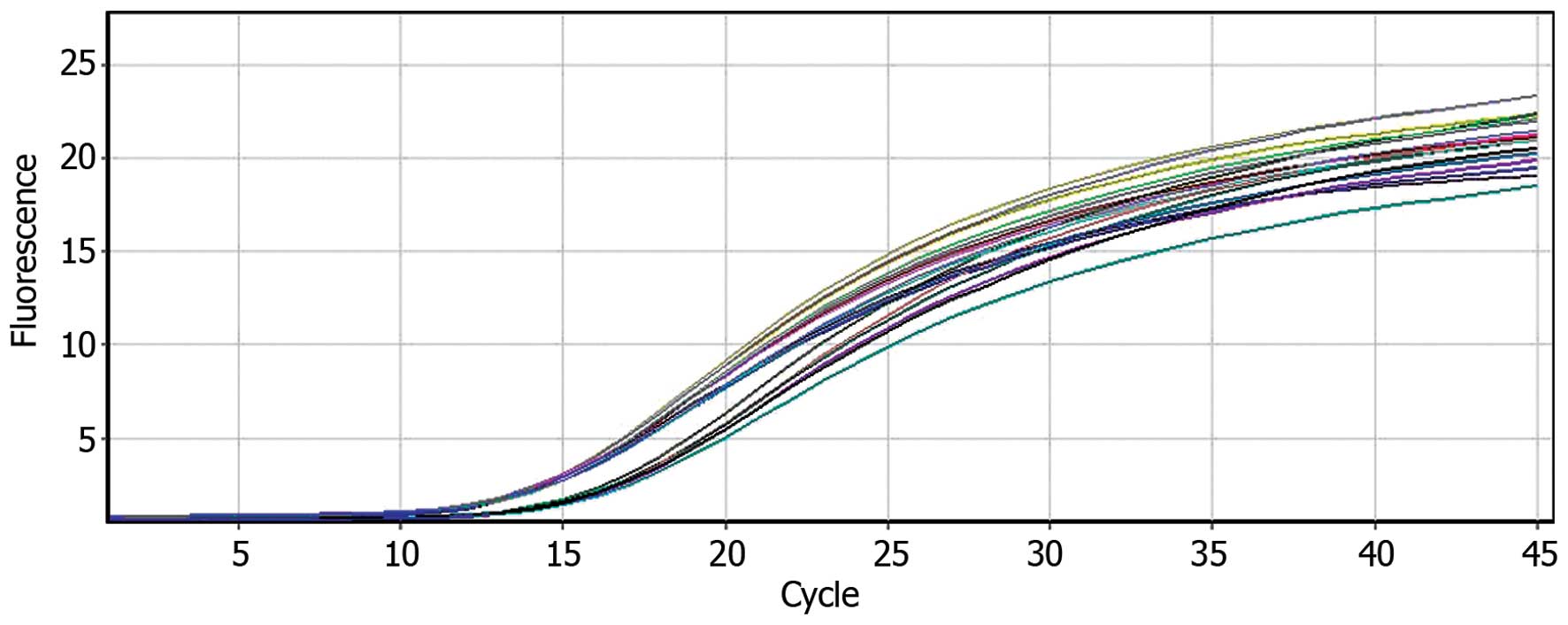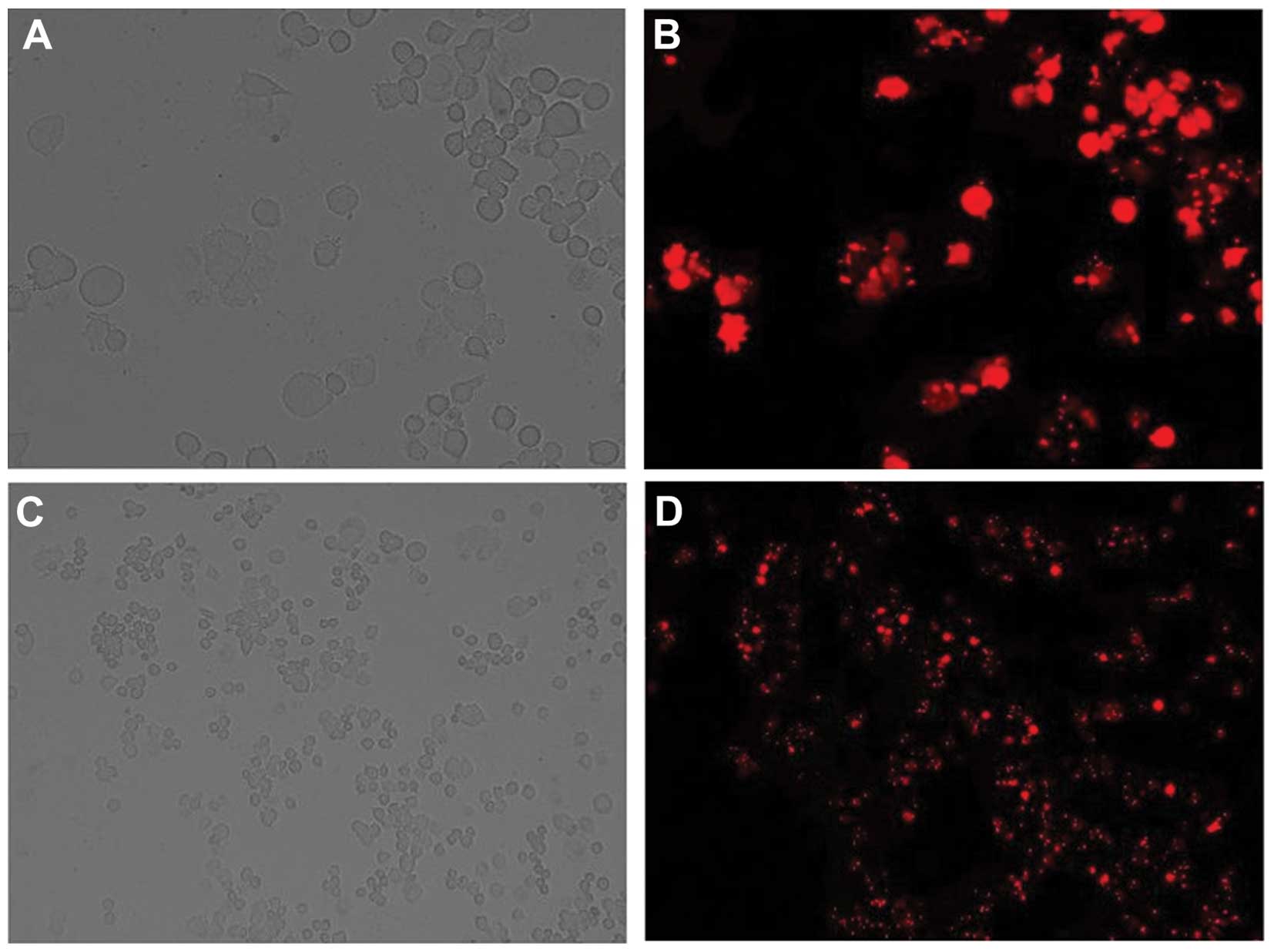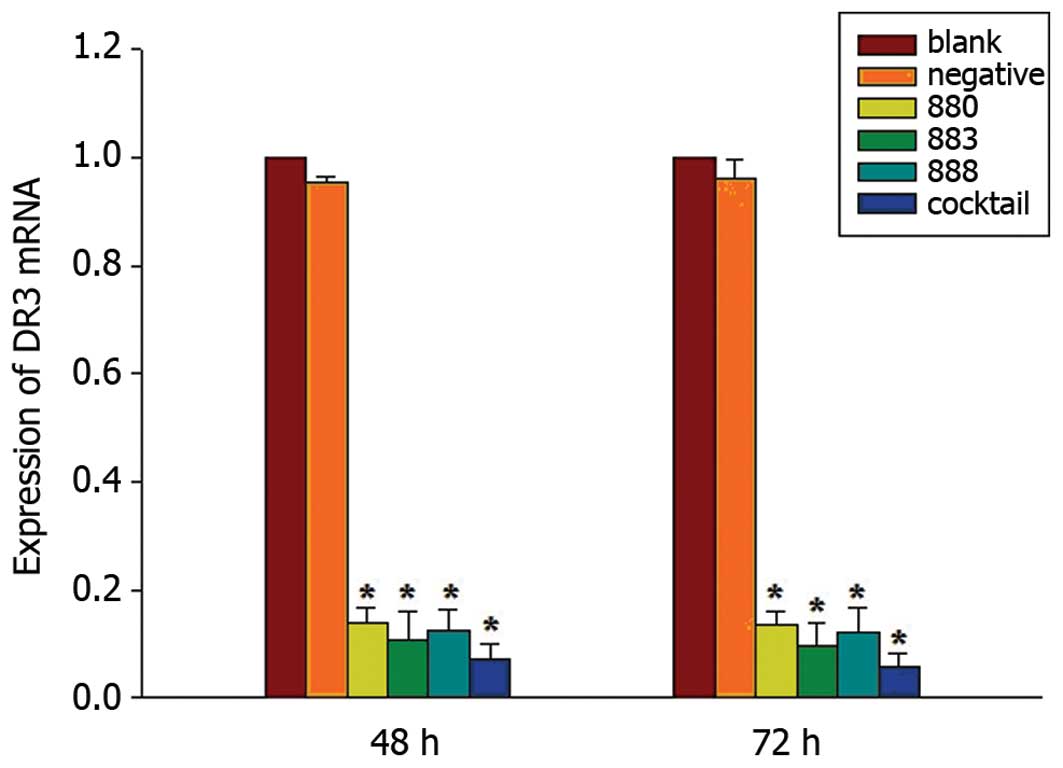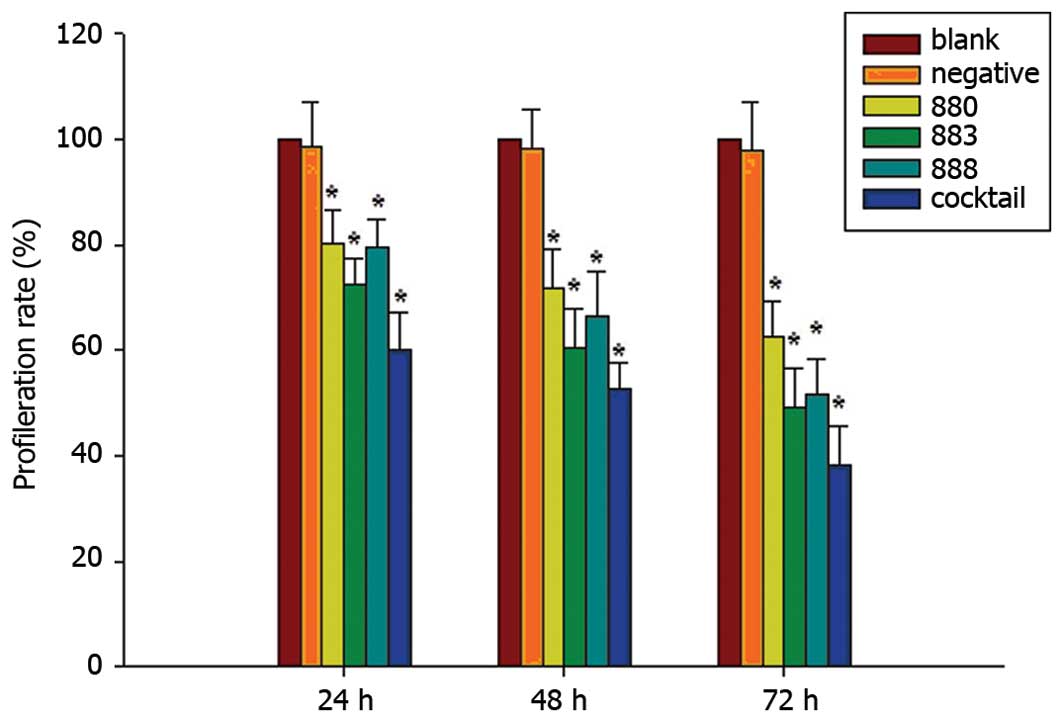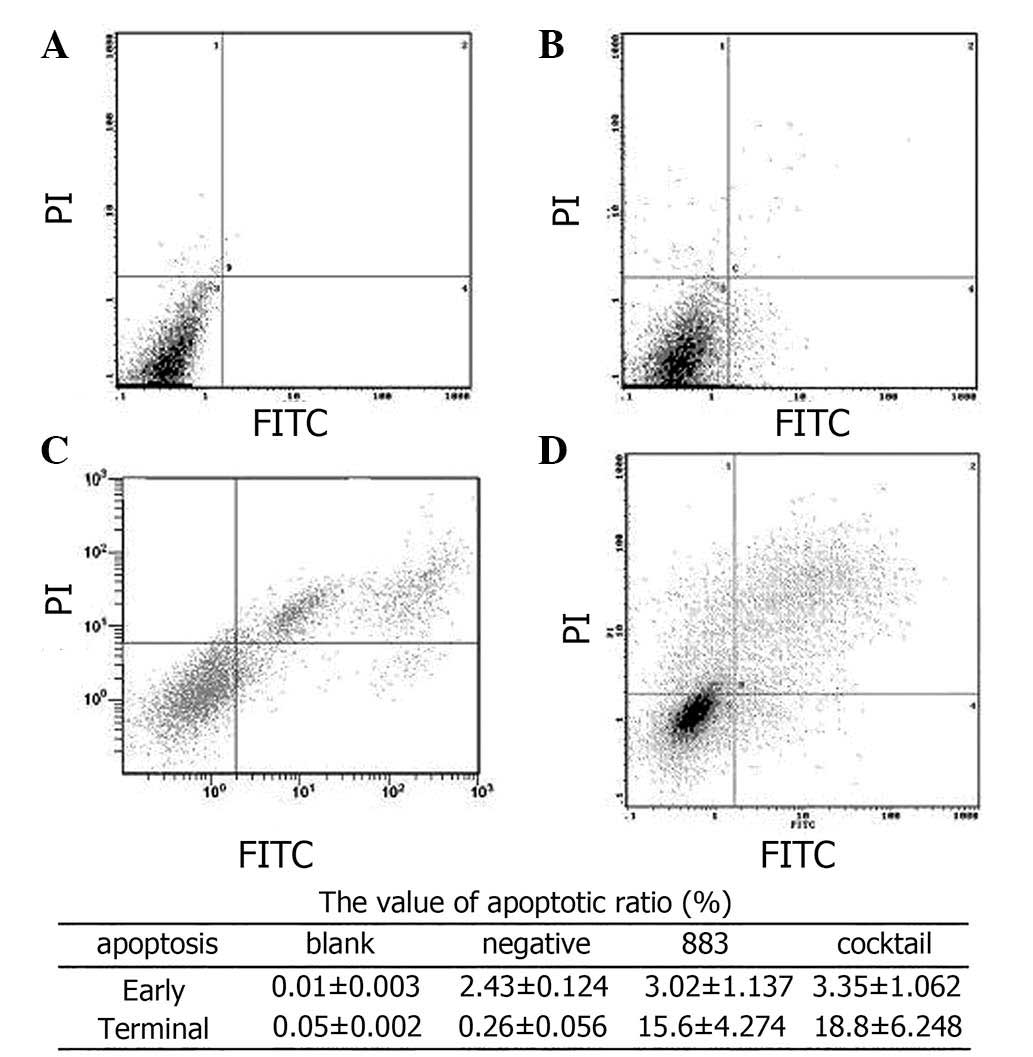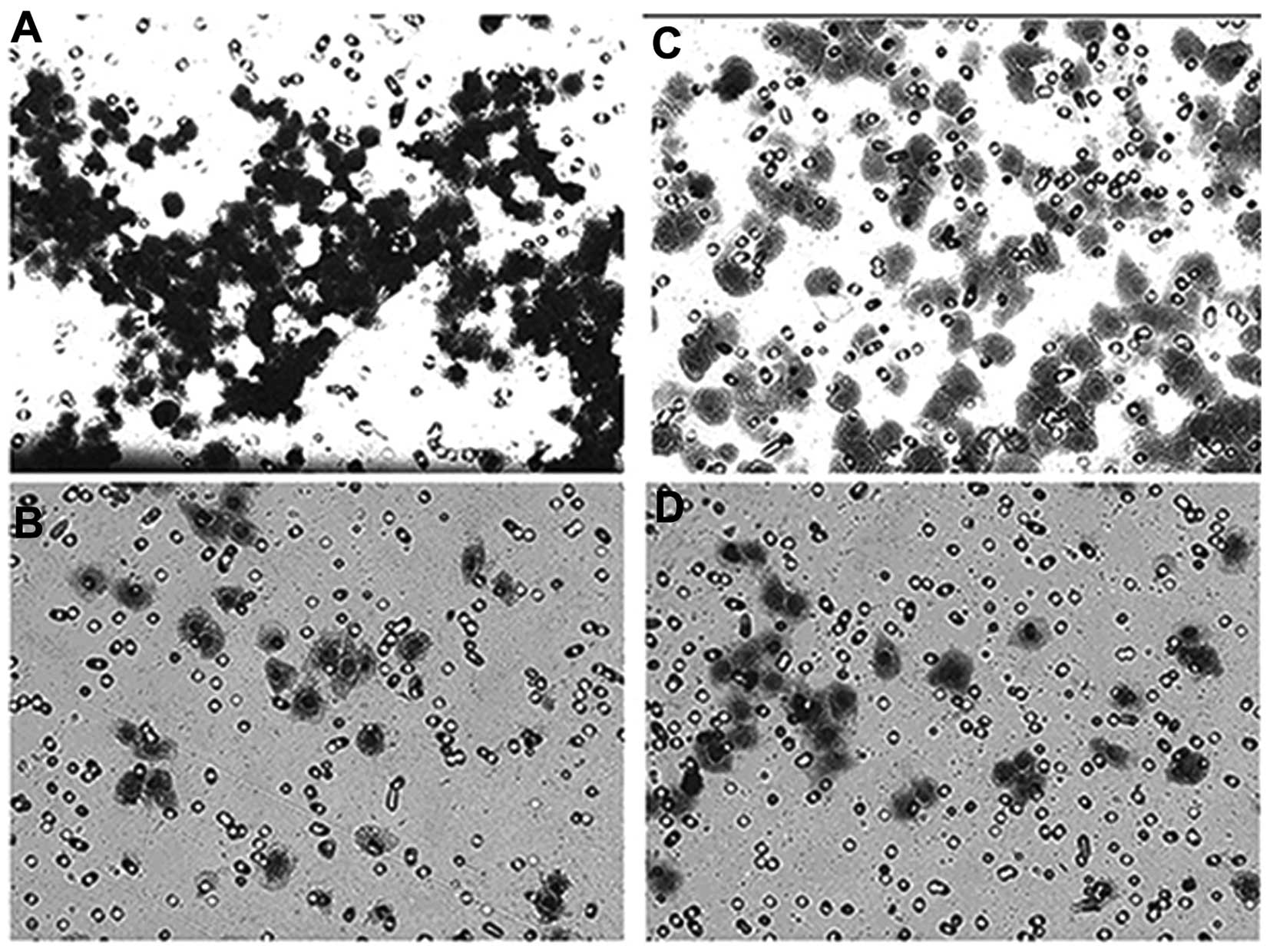|
1
|
Parkin DM, Bray F, Ferlay J and Pisani P:
Estimating the world cancer burden: Globocan 2000. Int J Cancer.
94:153–156. 2001. View
Article : Google Scholar : PubMed/NCBI
|
|
2
|
Llovet JM and Bruix J: Novel advancements
in the management of hepatocellular carcinoma in 2008. J Hepatol.
48(Suppl 1): S20–S37. 2008. View Article : Google Scholar : PubMed/NCBI
|
|
3
|
Bergé M, Bonnin P, Sulpice E, et al: Small
interfering RNAs induce target-independent inhibition of tumor
growth and vasculature remodeling in a mouse model of
hepatocellular carcinoma. Am J Pathol. 177:3192–3201. 2010.
View Article : Google Scholar : PubMed/NCBI
|
|
4
|
Schuster MJ and Wu GY: Gene therapy for
hepatocellular carcinoma: progress but many stones yet unturned.
Gastroenterology. 112:656–659. 1997. View Article : Google Scholar : PubMed/NCBI
|
|
5
|
Chinnaiyan AM, O’Rourke K, Yu GL, et al:
Signal transduction by DR3, a death domain-containing receptor
related to TNFR-1 and CD95. Science. 8:990–992. 1996. View Article : Google Scholar
|
|
6
|
Ashkenazi A and Dixit VM: Death receptor:
signaling and modulation. Science. 281:1305–1308. 1998. View Article : Google Scholar : PubMed/NCBI
|
|
7
|
Croft M: The role of TNF superfamily
members in T-cell function and diseases. Nat Rev Immunol.
9:271–285. 2009. View
Article : Google Scholar : PubMed/NCBI
|
|
8
|
Kang YJ, Kim WJ, Bae HU, et al:
Involvement of TL1A and DR3 in induction of proinflammatory
cytokines and matrix metalloproteinase-9 in atherogenesis.
Cytokine. 29:229–235. 2005. View Article : Google Scholar : PubMed/NCBI
|
|
9
|
Fang L, Adkins B, Deyev V and Podack ER:
Essential role of TNF receptor superfamily 25 (TNFRSF25) in the
development of allergic lung inflammation. J Exp Med.
205:1037–1048. 2008. View Article : Google Scholar : PubMed/NCBI
|
|
10
|
Migone TS, Zhang J, Luo X, et al: TL1A is
a TNF-like ligand for DR3 and TR6/DcR3 and functions as a T cell
costimulator. Immunity. 16:479–492. 2002. View Article : Google Scholar : PubMed/NCBI
|
|
11
|
Pappu BP, Borodovsky A, Zheng TS, et al:
TL1A-DR3 interaction regulates Th17 cell function and Th17-mediated
autoimmune disease. J Exp Med. 205:1049–1062. 2008. View Article : Google Scholar : PubMed/NCBI
|
|
12
|
Meylan F, Davidson TS, Kahle E, et al: The
TNF-family receptor DR3 is essential for diverse T cell-mediated
inflammatory diseases. Immunity. 29:79–89. 2008. View Article : Google Scholar : PubMed/NCBI
|
|
13
|
Bamias G, Martin C III, Marini M, et al:
Expression, localization, and functional activity of TL1A, a novel
Th1-polarizing cytokine in inflammatory bowel disease. J Immunol.
171:4868–4874. 2003. View Article : Google Scholar : PubMed/NCBI
|
|
14
|
Warzocha K, Ribeiro P, Charlot C, Renard
N, Coiffier B and Salles G: A new death receptor 3 isoform:
expression in human lymphoid cell lines and non-Hodgkin’s
lymphomas. Biochem Biophys Res Commun. 242:376–379. 1998.
View Article : Google Scholar : PubMed/NCBI
|
|
15
|
Gout S, Morin C, Houle F and Huot J: Death
receptor-3, a new E-Selectin counter-receptor that confers
migration and survival advantages to colon carcinoma cells by
triggering p38 and ERK MAPK activation. Cancer Res. 66:9117–9124.
2006. View Article : Google Scholar : PubMed/NCBI
|
|
16
|
Jiang S, Song MJ, Shin EC, Lee MO, Kim SJ
and Park JH: Apoptosis in human hepatocarcinoma cell lines by
chemotherapeutic drugs via Fas-dependent and Fas-independent
pathways. Hepatology. 29:101–110. 1999. View Article : Google Scholar
|
|
17
|
Zhang L, Zhang Y, Zhang L, Yang X and Lv
Z: Lupeol, a dietary triterpene, inhibited growth and induced
apoptosis through down-regulation of DR3 in SMMC7721 cells. Cancer
Invest. 27:163–170. 2009. View Article : Google Scholar : PubMed/NCBI
|
|
18
|
Strumberg D: Preclinical and clinical
development of the oral multikinase inhibitor sorafenib in cancer
treatment. Drugs Today (Barc). 41:773–784. 2005. View Article : Google Scholar
|
|
19
|
Adnane L, Trail PA, Taylor I and Wilhelm
SM: Sorafenib (BAY 43-9006, Nexavar), a dual-action inhibitor that
targets RAF/MEK/ERK pathway in tumor cells and tyrosine kinases
VEGFR/PDGFR in tumor vasculature. Methods Enzymol. 407:597–612.
2006. View Article : Google Scholar : PubMed/NCBI
|
|
20
|
Rini BI: Sorafenib. Expert Opin
Pharmacother. 7:453–461. 2006. View Article : Google Scholar : PubMed/NCBI
|
|
21
|
Willett CG, Boucher Y, di Tomaso E, et al:
Direct evidence that the VEGF-specific antibody bevacizumab has
antivascular effects in human rectal cancer. Nat Med. 10:145–147.
2004. View Article : Google Scholar : PubMed/NCBI
|
|
22
|
Goodman L: Persistence - luck - Avastin. J
Clin Invest. 113:9342004. View
Article : Google Scholar
|
|
23
|
Bergsland E and Dickler MN: Maximizing the
potential of bevacizumab in cancer treatment. Oncologist. 9(Suppl
1): 36–42. 2004. View Article : Google Scholar : PubMed/NCBI
|
|
24
|
Zhu AX, Blaszkowsky LS, Ryan DP, et al:
Phase II study of gemcitabine and oxaliplatin in combination with
bevacizumab in patients with advanced hepatocellular carcinoma. J
Clin Oncol. 4:1898–1903. 2006. View Article : Google Scholar
|
|
25
|
David D, Rajappan L, Balachandran KK, et
al: Prognostic significance of STAT3 and phosphorylated STAT3 in
human soft tissue tumors-a clinicopathological analysis. J Exp Clin
Res. 30:562011. View Article : Google Scholar
|
|
26
|
Roth W, Grund K, Wiestler OD and
Schirmacher P: The anti-diabetic drug troglitazone sensitizes colon
cancer cells to TRAIL-induced apoptosis by down-regulating FLIP.
Verh Dtsch Ges Pathol. 91:294–301. 2007.(In German).
|
|
27
|
Zhao B, Li L, Cui K, Wang AL, et al:
Mechanisms of TRAIL and gemcitabine induction of pancreatic cancer
cell apoptosis. Asian Pac J Cancer Prev. 12:2675–2678. 2011.
|
|
28
|
Wilhelm SM, Carter C, Tang L, et al: BAY
43-9006 exhibits broad spectrum oral antitumor activity and targets
the RAF/MEK/ERK pathway and receptor tyrosine kinases involved in
tumor progression and angiogenesis. Cancer Res. 64:7099–7109. 2004.
View Article : Google Scholar : PubMed/NCBI
|
|
29
|
Herold-Mende C, Steiner HH, Andl T, et al:
Expression and functional significance of vascular endothelial
growth factor receptors in human tumor cells. Lab Invest.
79:1573–1582. 1999.
|
|
30
|
Kitson J, Raven T, Jiang YP, et al: A
death-domain-containing receptor that mediates apoptosis. Nature.
384:372–375. 1996. View
Article : Google Scholar : PubMed/NCBI
|
|
31
|
Marsters SA, Sheridan JP, Donahue CJ, et
al: Apo-3, a new member of the tumor necrosis factor receptor
family, contains a death domain and activates apoptosis and
NF-kappa B. Curr Biol. 6:1669–1676. 1996. View Article : Google Scholar : PubMed/NCBI
|
|
32
|
Bodmer JL, Burns K, Schneider P, et al:
TRAMP, a novel apoptosis-mediating receptor with sequence homology
to tumor necrosis factor receptor 1 and Fas (Apo-1/CD95). Immunity.
6:79–88. 1997. View Article : Google Scholar : PubMed/NCBI
|
|
33
|
Screaton GR, Xu XN, Olsen AL, Cowper AE,
Tan R, McMichael AJ and Bell JI: LARD: A new lymphoid-specific
death domain containing receptor regulated by alternative pre-mRNA
splicing. Proc Natl Acad Sci USA. 94:4615–4619. 1997. View Article : Google Scholar : PubMed/NCBI
|
|
34
|
Abou-Alfa GK, Schwartz L, Ricci S, et al:
Phase II study of sorafenib in patients with advanced
hepatocellular carcinoma. J Clin Oncol. 24:4293–4300. 2006.
View Article : Google Scholar : PubMed/NCBI
|
|
35
|
Butterfield LH: Immunotherapeutic
strategies for hepatocellular carcinoma. Gastroenterology. 127(5
Suppl 1): S232–S241. 2004. View Article : Google Scholar : PubMed/NCBI
|
|
36
|
Butterfield LH: Recent advances in
immunotherapy for hepatocellular cancer. Swiss Med Wkly. 137:83–90.
2007.PubMed/NCBI
|
|
37
|
Song G, Luo Q, Qin J, Wang L, Shi Y and
Sun C: Effects of oxymatrine on proliferation and apoptosis in
human hepatoma cells. Colloids Surf B Biointerfaces. 48:1–5. 2006.
View Article : Google Scholar : PubMed/NCBI
|
|
38
|
Ashkenazi A and Dixit VM: Death receptors:
signaling and modulation. Science. 281:1305–1308. 1998. View Article : Google Scholar : PubMed/NCBI
|
|
39
|
Hengartner MO: The biochemistry of
apoptosis. Nature. 407:770–776. 2000. View
Article : Google Scholar : PubMed/NCBI
|
|
40
|
Nakagawa T, Zhu H, Morishima N, et al:
Caspase-12 mediates endoplasmic-reticulum-specific apoptosis and
cytotoxicity by amyloid-beta. Nature. 403:98–103. 2000. View Article : Google Scholar : PubMed/NCBI
|
|
41
|
Pittoni P, Tripodo C, Piconese S, Mauri G,
Parenza M, Rigoni A, Sangaletti S and Colombo MP: Mast cell
targeting hampers prostate adenocarcinoma development but promotes
the occurrence of highly malignant neuroendocrine cancers. Cancer
Res. 71:5987–5997. 2011. View Article : Google Scholar : PubMed/NCBI
|
|
42
|
Dechant MJ, Fellenberg J, Scheuerpflug CG,
Ewerbeck V and Debatin KM: Mutation analysis of the apoptotic
‘death-receptors’ and the adaptors TRADD and FADD/MORT-1 in
osteosarcoma tumor samples and osteosarcoma cell lines. Int J
Cancer. 109:661–667. 2004. View Article : Google Scholar : PubMed/NCBI
|
|
43
|
He Y, Liu F, Zhang L, et al: Growth
inhibition and apoptosis induced by lupeol, a dietary triterpene,
in human hepatocellular carcinoma cells. Biol Pharm Bull.
34:517–522. 2011. View Article : Google Scholar : PubMed/NCBI
|



